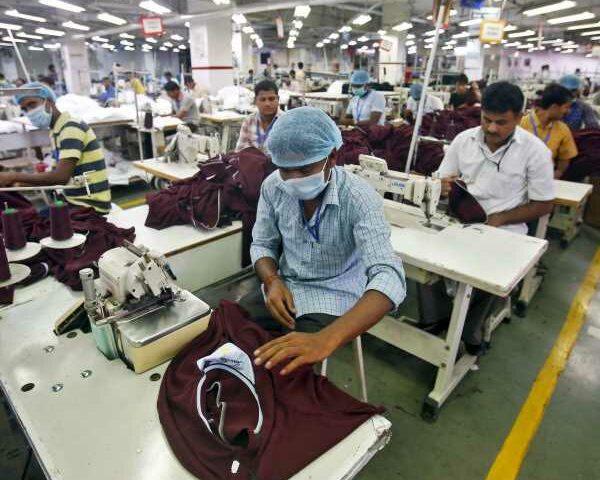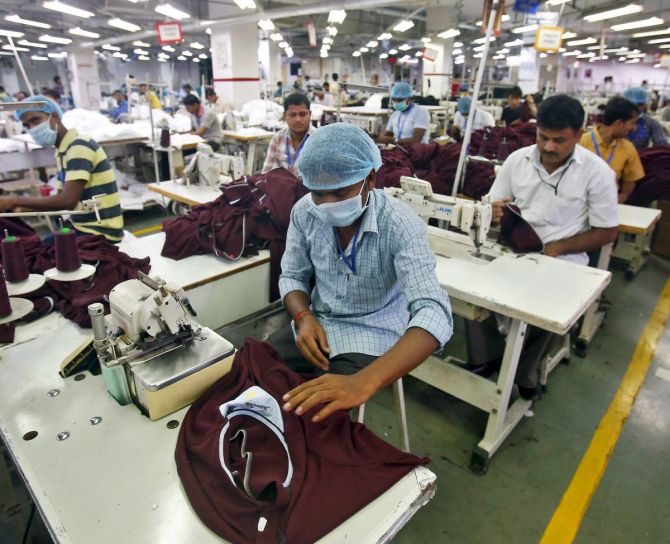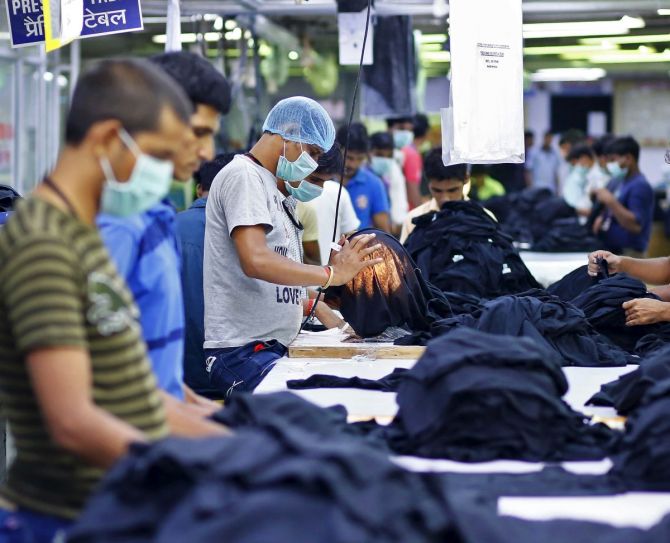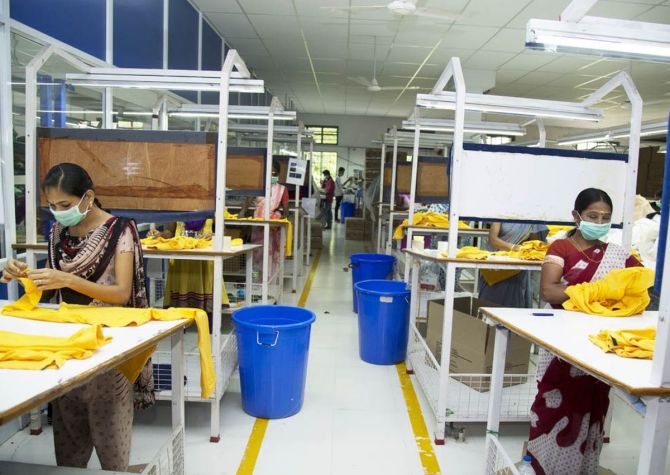‘A change we have seen after the Russia-Ukraine war is the energy crisis in Europe.’
‘Earlier, in Europe, people used to change their clothes after 5 washes, now they are using it till 15-20 washes.’
‘They used to change their entire wardrobe after 2 months or so, but because of the economic conditions, it has changed.’
‘It has affected exports as 40% of our exports is to Europe, 30% to the US and 10% to the UK.’
‘The war has to end for better days to come.’
Tirupur, the textile capital of India should have been celebrating big time during the FIFA football World Cup. But it did not happen.
It is the time some of the world’s big textile brands would make big purchases. Tirupur missed the bus.
Why did Tirupur and for that matter India fall behind in getting orders from major clothing brands when such a big event was happening in the world?
“Tirupur is concentrating mainly on cotton-based products. Only 10% of what Tirupur manufactures is blended fabrics. This is a handicap for Tirupur. In the case of sportswear, people use only synthetic garments,” Sivaswamy Sakthivel, executive secretary, Tirupur Exporters Association tells Shobha Warrier/Rediff.com.
It was reported that Tirupur garment exporters failed to bag orders from major clothing brands for the FIFA World Cup. Was it only because countries like Vietnam and Bangladesh could offer products at a much lower cost? Or, are there any other reasons?
One of the major reasons is because Tirupur is concentrating mainly on cotton-based products. Only 10% of what Tirupur manufactures is blended fabrics.
I would say, this is a handicap for Tirupur.
That’s why we, at the Exporters Association have been taking a lot of efforts to popularise the manufacturing of synthetic garments.
In the case of sportswear, people use only synthetic garments.
Sportwear made out of man-made fibre?
Yes, made out of man-made fibre. In India, Ludhiana is one of the major centres that manufacture man-made fibre items.
Tirupur is lacking in making man-made fibre garments because of our weakest link in the processing front.
Why is it that Tirupur is not moving towards man-made fibre garments?
Because our people are so comfortable and familiar with cotton fabrics that they do not want to try something new.
Of course, there are a few companies that have been experimenting with synthetic and MMF items.
They used to supply synthetic garments to a few major brands for the FIFA World Cup, Euro Cup and even the IPL. But the problem is, 90% of the products manufactured in Tirupur are cotton based.
You mean the time has come for Tirupur to look beyond cotton now?
Of course. In fact, more than a decade back itself, we have been asking manufacturers to go for diversification.
In the global market, synthetics are the order of the day.
In fact, 70% of the global market consumption is synthetic based products only.
We have been conducting meetings roping in synthetic supplier Reliance and viscos supplier Grasim, etc. But very few manufacturers are ready to take the risk of moving from cotton to synthetic material production.
Out of the 1,300 exporting units in Tirupur, 90% are in the MSME category.
Though some big players experiment and go for product diversification, majority are not ready.
We have so many different small units working in tandem and exporting garments worth Rs 33,000 crores (Rs 330 billion).
So, it is not necessary to set up all the necessary units under one roof, still manufacturers are reluctant to diversify.
The sportswear market including athletic wear, swim wear, performance wear, etc is a huge synthetic market. Unfortunately, we have not yet tapped it.
Is it only because the units in Tirupur are MSMEs that they find it difficult to diversify?
It is mainly because they do not want to move out of the comfort zone of manufacturing cotton-based products.
Technology-wise also, we are handicapped. We do not have much expertise.
That’s why the government has come out with the product linked incentive scheme for man-made fibre garments.
Only 53 Indian players have shown interest in manufacturing such garments.
You can say, Tirupur is missing the bus.
That’s the difference between us and China. China dominates the field because they experiment in manufacturing synthetic stuff.
On the other hand, our people do not want to move from the comfort zone.
Do you think missing an opportunity to supply for the FIFA World Cup has opened the eyes of Tirupur exporters?
Not just FIFA, there are so many matches happening like the European Cup matches, COPA, athletics, swimming… everyone knows about the huge market out there. But somehow, no experimentation or diversification is happening here.
Do you think low-cost products from countries like Vietnam, Bangladesh, Cambodia, etc also must have made big brands go to those countries for garments in a big way for the FIFA World Cup?
If you look at textile exporting, China is far ahead of all the other countries followed by Bangladesh that is doing exports worth $38 billion. Vietnam is not far behind doing exports worth $36 billion.
On the other hand, we are hovering around $17 billion for the last 5-6 years.
The biggest advantage Bangladesh has in exporting to the EU is, there is no customs duty as it is an underdeveloped country. On the other hand, our products will cost 10% more.
In the case of Vietnam, it entered into a free trade agreement with EU.
When these countries enjoy these benefits, we are handicapped.
In fact, India has been trying to get into a trade agreement with the EU for the last one-and-a-half decades, but they want duty reduction for auto components, liquor and wines and some dairy products.
We hope to get a trade agreement with the UK by next March. But the major consumer is the European Union with 27 countries under one umbrella.
EU imports around $17 billion worth of garments while the USA imports $83 billion worth of garments. The major chunk of these imports is from China, Bangladesh and Vietnam.
Then, countries like Cambodia, Lagos and Myanmar which are categorised as least developed countries have also increased their exports.
Another interesting fact is, Chinese manufacturers are investing in these countries and exporting from there to the EU and USA.
What Chinese companies do is, they import fabrics from their parent companies to these countries, and manufacture garments there using the advantage of low wages, subsidies given by the local governments and no customs duty while exporting to EU.
So, we have to face stiff competition. We do not have a level playing field.
What will happen to clusters like Tirupur in such a scenario?
Last year, Tirupur manufactured Rs 61,000 crores (Rs 610 billion) worth of garments.
Our exports was Rs 33,525 crores (Rs 335.25 billion) while the domestic market is around Rs 27,000 crores (Rs 270 billion).
53% of knitwear exports from India is from Tirupur. But 70% of global consumption is synthetic fabrics and only 30% consume cotton fabrics.
Bangladesh exports two-and-a-half times more than India!
The fact is, if we have to increase the global market share from the present 3.7%, we have to diversify to MMF and synthetic fibre.
Another change that we have seen after the Russia-Ukraine war is high inflation and the energy crisis in Europe and the UK.
Earlier, in Europe, people used to change their clothes after 5 washes, now they are using it till 15-20 washes.
Generally, they used to change their entire wardrobe after 2 months or so, but because of the economic conditions, it has changed.
Naturally, it has affected exports from countries like India as 40% of our exports is to Europe, 30% to the US and 10% to the UK.
The war has to end for better days to come for everyone. Otherwise, people will only be saving for the rainy day.
Feature Presentation: Rajesh Alva/Rediff.com
Source: Read Full Article





